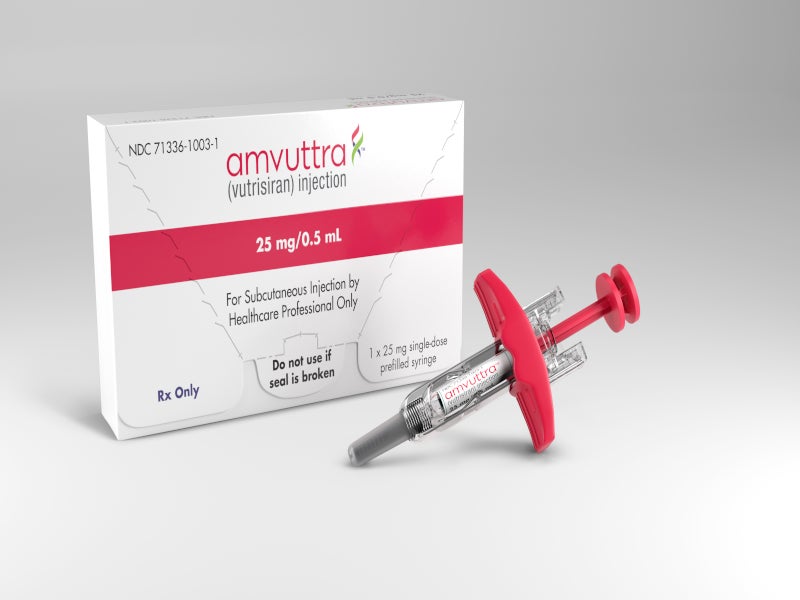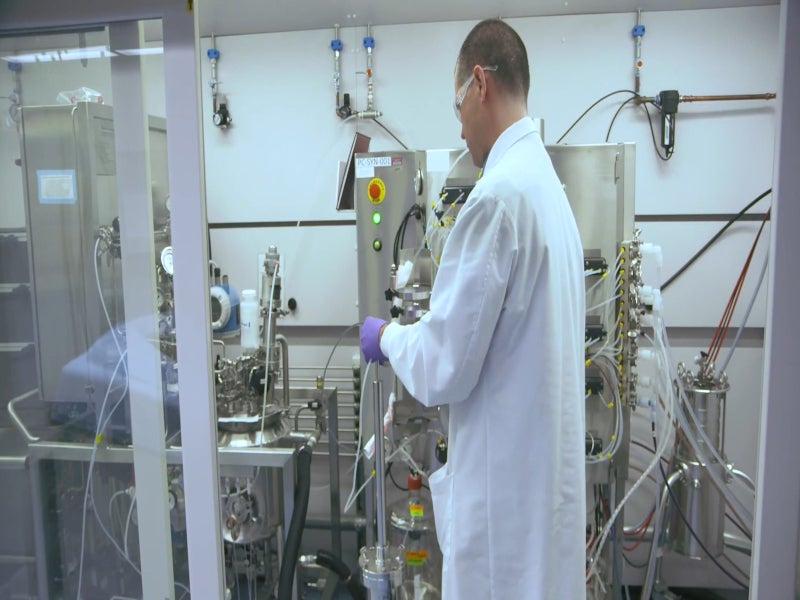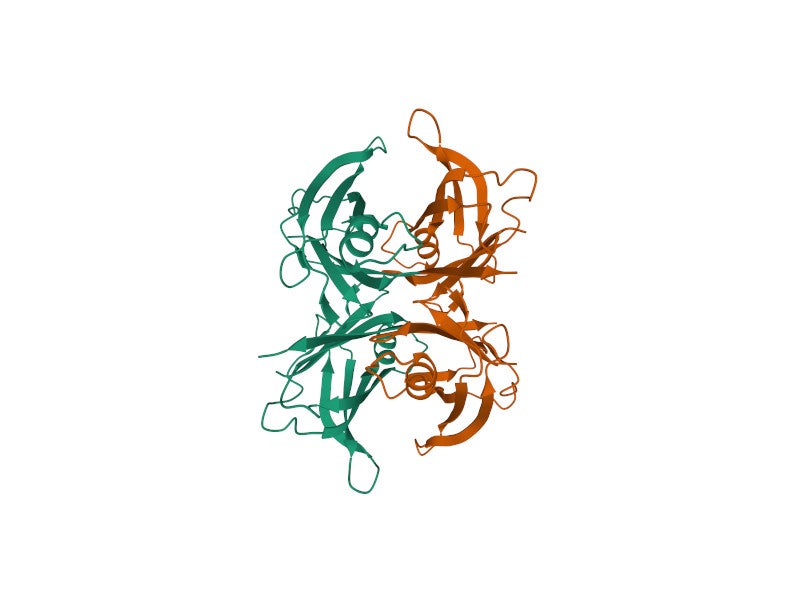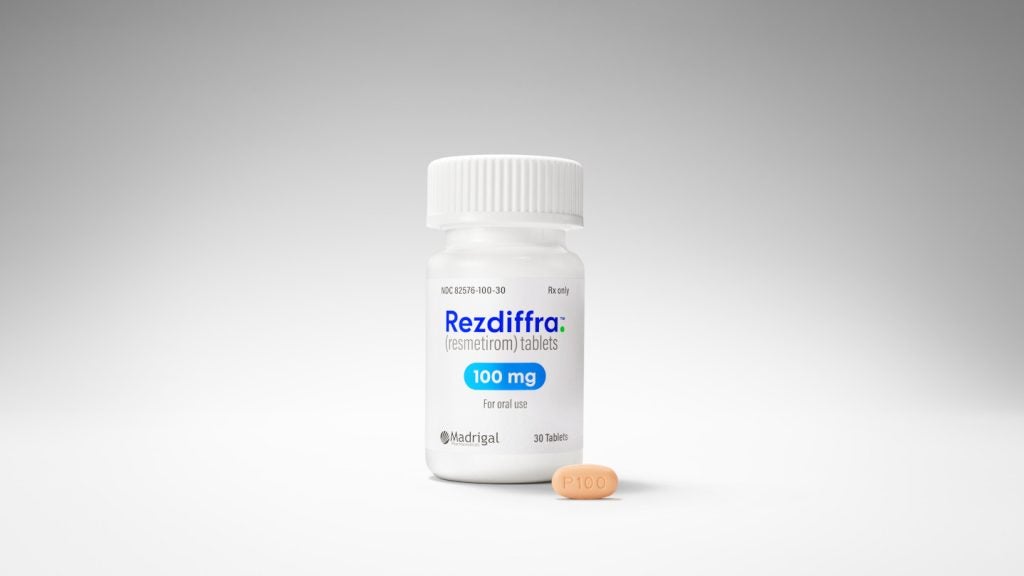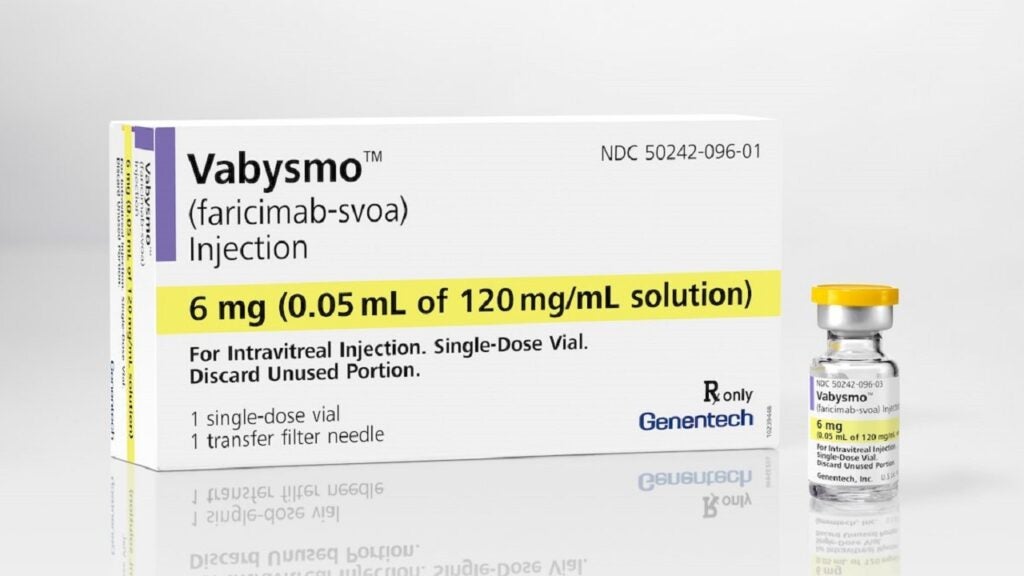AMVUTTRA™ (vutrisiran) is an RNAi therapeutic indicated for the treatment of polyneuropathy caused by hereditary transthyretin-mediated (hATTR) amyloidosis in adults.
AMVUTTRA is the fifth RNAi therapy developed by Alnylam Pharmaceuticals to have received regulatory approval in less than four years.
The drug is available in 25mg/0.5ml strength as a clear, colourless-to-yellow solution in a single-dose prefilled syringe for subcutaneous administration once every three months.
Regulatory approvals for AMVUTTRA
In April 2021, Alnylam submitted a new drug application (NDA) to the US Food and Drug Administration (FDA) for the use of AMVUTTRA injection for the treatment of the polyneuropathy of hATTR amyloidosis in adults. The FDA approved AMVUTTRA for the condition in June 2022.
The drug is also being reviewed by regulatory authorities for approval in Europe, Brazil and Japan.
AMVUTTRA holds orphan drug designation in the US and the European Union (EU) for the treatment of ATTR amyloidosis, and in Japan for transthyretin type familial amyloidosis with polyneuropathy.
Hereditary transthyretin-mediated (hATTR) amyloidosis
Amyloidosis is a large group of diseases caused by the deposition of insoluble protein in tissues. It is classified based on clinical signs and the biochemical type of amyloid protein involved. Most amyloidosis forms are multisystemic, generalised or diffuse, while some are localised.
hATTR, also known as familial amyloid cardiomyopathy (TTR-FAC) or transthyretin familial amyloid polyneuropathy (TTR-FAP), is a rare, inherited, rapidly progressive, fatal condition. Polyneuropathy is one of the condition’s debilitating manifestations.
hATTR is characterised by the extracellular deposition of misfolded transthyretin (TTR) protein. The disease affects several organs and systems, including the liver, nervous system, heart, kidneys, and gastrointestinal tract.
AMVUTTRA’s mechanism of action
AMVUTTRA contains vutrisiran, a chemically modified double-stranded small interfering ribonucleic acid (siRNA) that targets mutant and wild-type TTR messenger RNA (mRNA) through RNA interference, causing their degradation and consequent reduction in the serum TTR protein levels.
Vutrisiran is covalently linked to a ligand that contains three N-acetyl galactosamine (GalNAc) residues to enable siRNA delivery to hepatocytes.
The drug is designed using Alnylam’s enhanced stabilisation chemistry (ESC) GalNAc-conjugate delivery platform to increase its potency and metabolic stability, allowing subcutaneous administration of the drug quarterly.
Clinical trials on AMVUTTRA
The FDA’s approval of AMVUTTRA was based on positive nine-month results from a global Phase III, randomised, open-label, multi-centre clinical study named HELIOS-A.
The study assessed AMVUTTRA’s efficacy and safety across a diverse group of patients with hATTR amyloidosis with polyneuropathy. A total of 164 patients were enrolled in the study and randomised in a 3:1 ratio to receive either 25mg of vutrisiran via subcutaneous injection quarterly or 0.3mg/kg of patisiran via intravenous infusion quarterly for 18 months.
The drug’s efficacy was evaluated by comparing the AMVUTTRA group in HELIOS-A with an external placebo group containing 77 patients from APOLLO, a landmark Phase III study of patisiran. APOLLO is a randomised, controlled study in a patient population comparable to that of HELIOS-A.
The HELIOS-A trial’s primary efficacy endpoint was the change in modified Neuropathy Impairment Score +7 (mNIS+7) from baseline until the ninth month.
The mNIS+7 is an objective assessment of neuropathy that contains the NIS and Modified +7 composite scores. The NIS objectively measures deficits in cranial nerve function, muscle strength, and reflexes, while the +7 assesses postural blood pressure, quantitative sensory testing, and peripheral nerve electrophysiology. The total possible mNIS+7 score ranges from 0 to 304 points, with higher scores representing greater disease severity.
At nine months, AMVUTTRA met the trial’s primary endpoints, with patients treated with the drug showing improvement with a 2.2-point mean decrease in mNIS+7 score from baseline, compared with a 14.8-point mean increase in mNIS+7 score in patients in the external placebo group, demonstrating a worsening of the condition at nine months.
Patients treated with AMVUTTRA achieved a 17-point mean difference relative to placebo by nine months. Around half of the patients treated with the drug experienced an improvement in neuropathy impairment relative to baseline.
AMVUTTRA (vutrisiran) is also being evaluated for the treatment of patients with ATTR amyloidosis with cardiomyopathy, including both hATTR and wild-type ATTR (wtATTR) amyloidosis, in the HELIOS-B Phase III study.
The most common adverse events reported in patients in the clinical study were arthralgia, dyspnoea, and reduced serum vitamin A levels.

